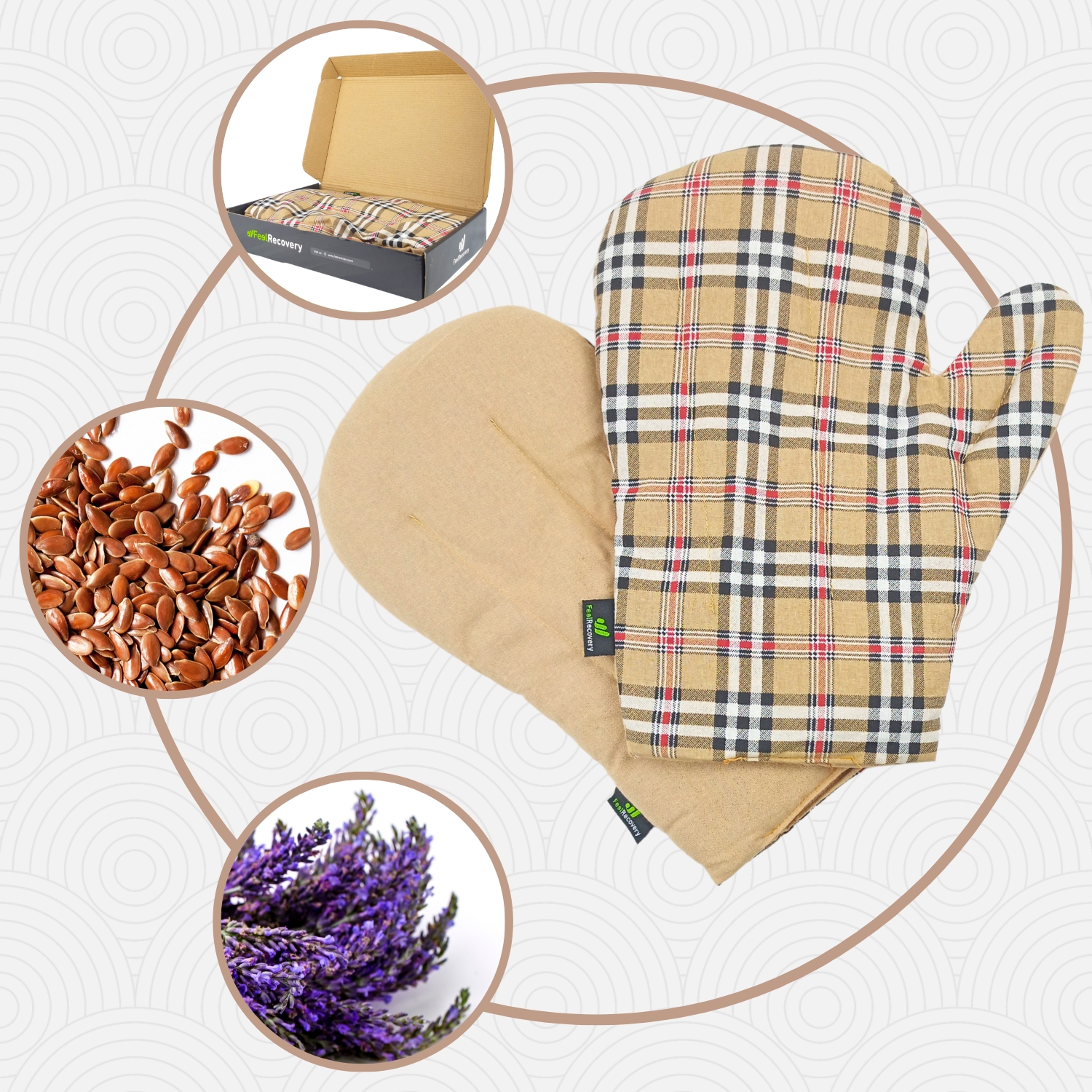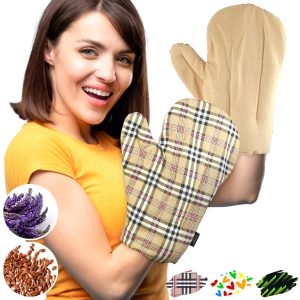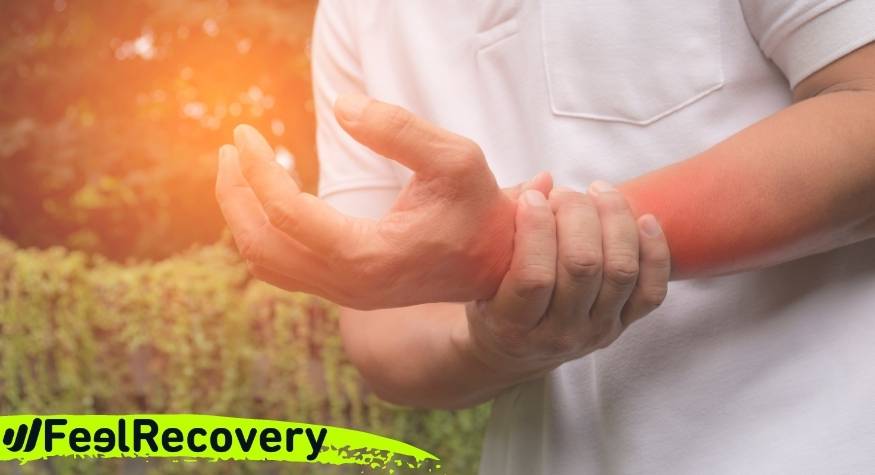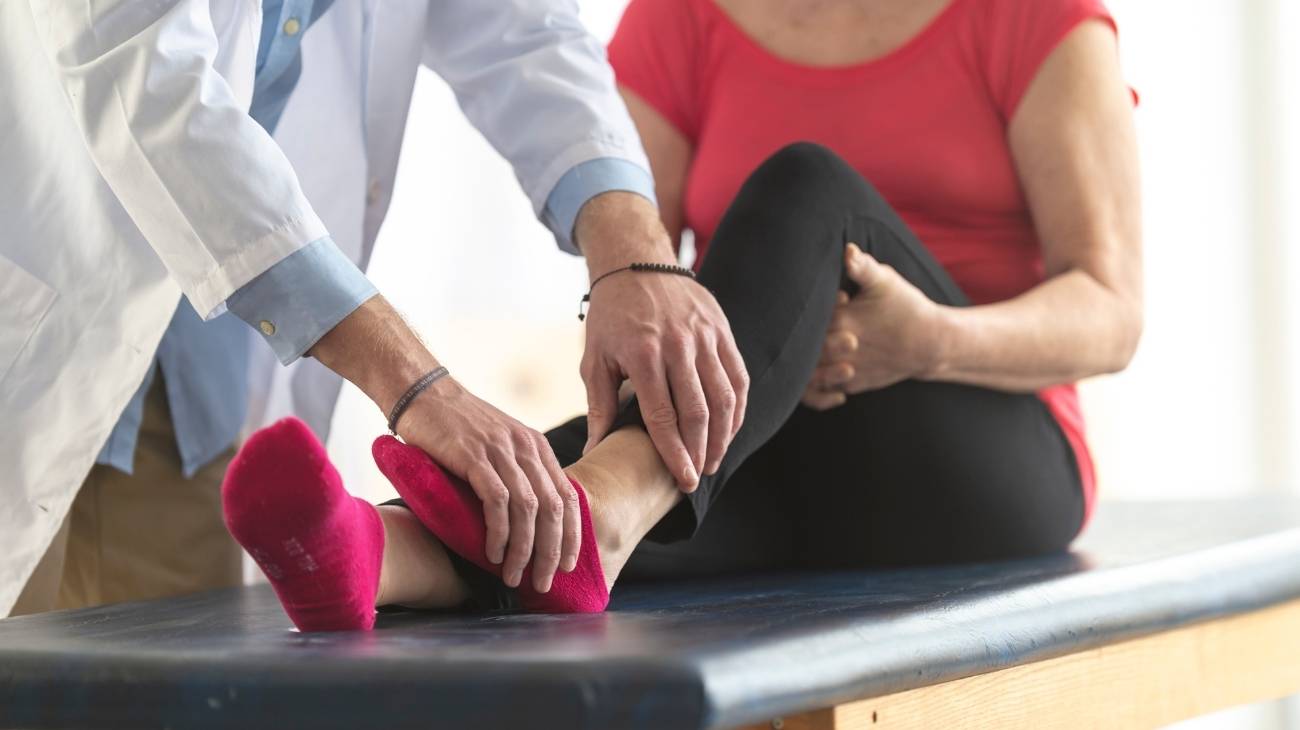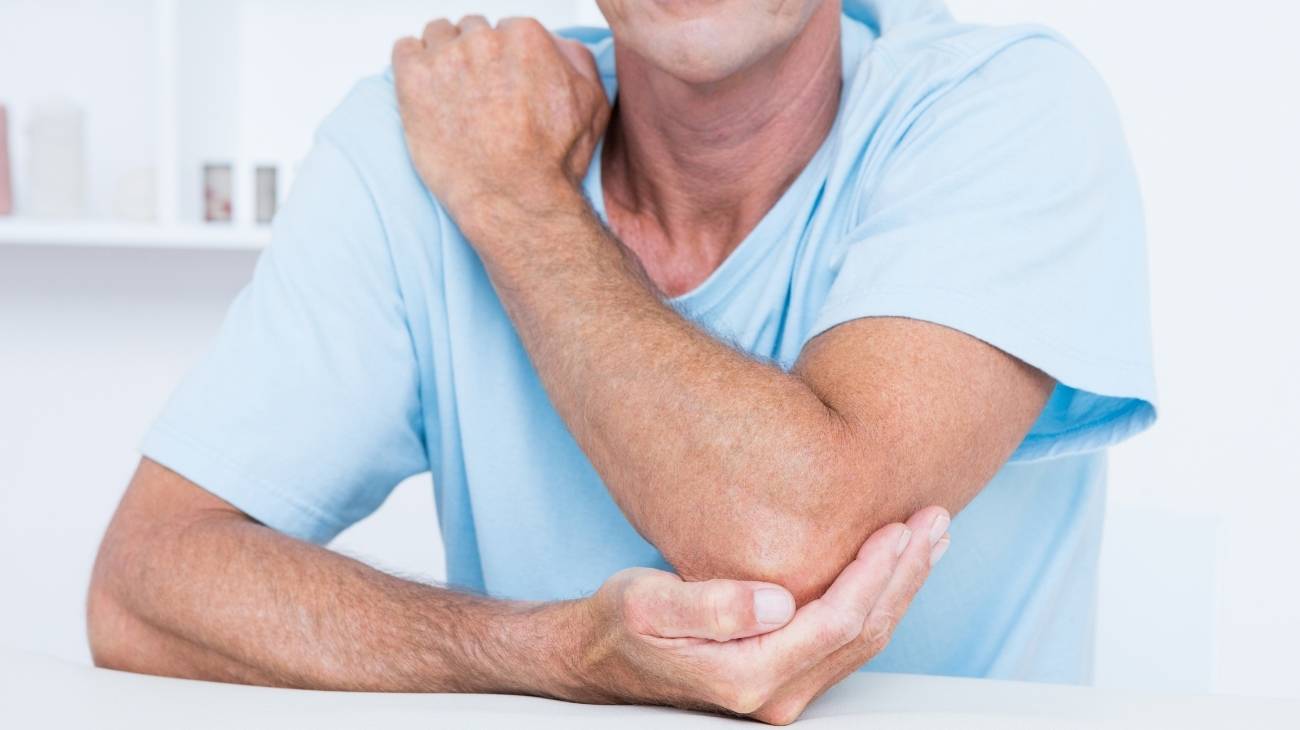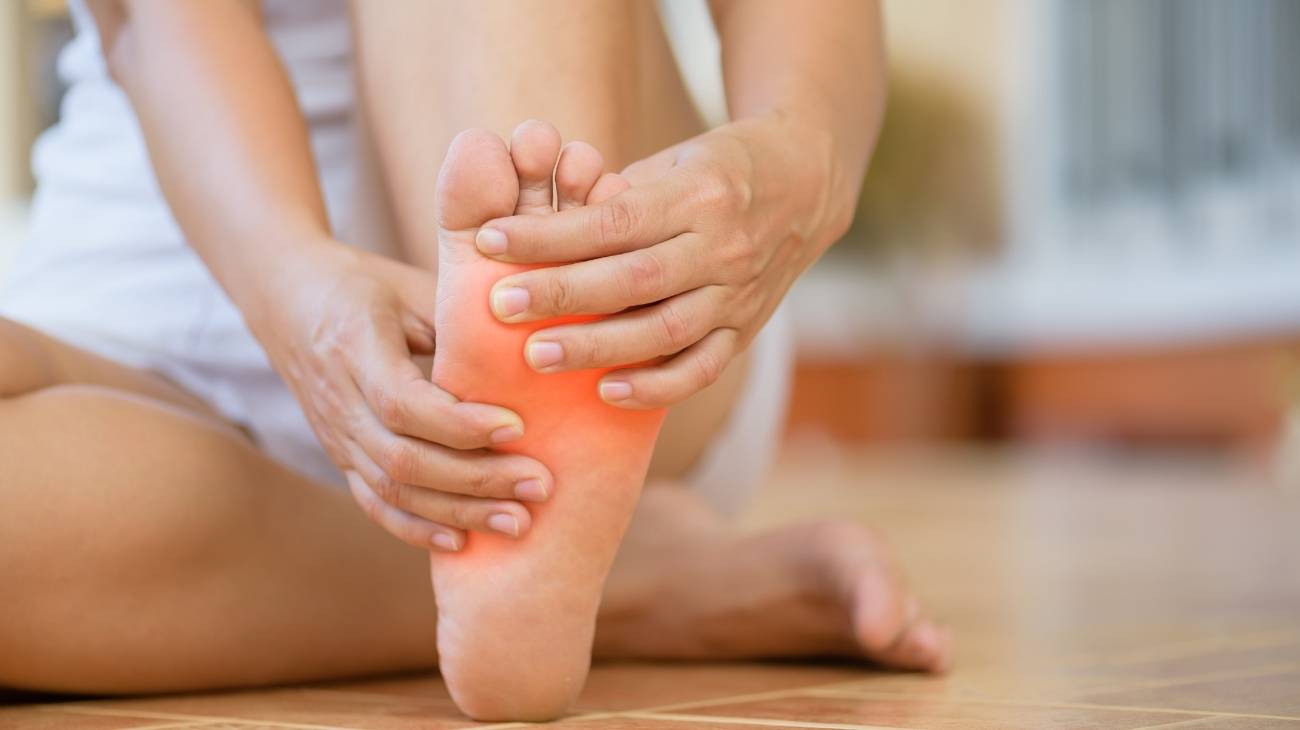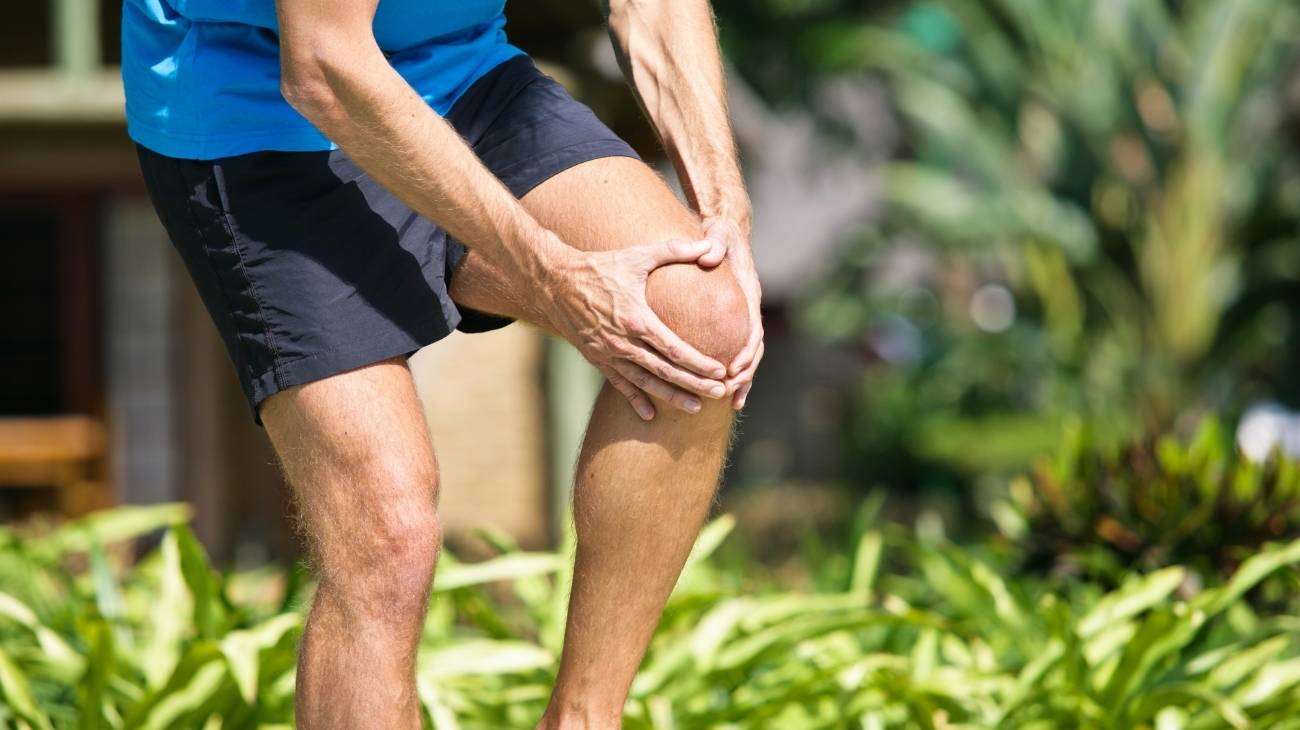- What is hand and wrist osteoarthritis or inflammation of the wrist and finger joints?
- What are the causes and risk factors for hand and wrist osteoarthritis?
- Best products for hands & wrist arthritis
- Main symptoms that warn us of arthritis in the hands
- What treatments are available to improve the symptoms of osteoarthritis of the hands and wrists?
- Which prevention methods for osteoarthritis of the hands and wrists are the most effective?
The wear and tear that occurs in the articular cartilage of the hands and wrists causes inflammation that may or may not be caused by the autoimmune system. For this reason, it is important for you to know what causes osteoarthritis in the joints of the hands and wrists and what the causes and risk factors are.
You will find this information in detail in the following paragraphs. You will be able to read about the main signs and symptoms that will warn you of the presence of the disease, the current treatments you can choose from and the best methods of prevention, so let's get started.
What is hand and wrist osteoarthritis or inflammation of the wrist and finger joints?
Hand and wrist osteoarthritis is a type of inflammation that occurs in the synovial membrane, which can severely affect the articular cartilage of the many joints in this part of the body. The wear and tear on the soft tissues and bones causes stiffness, nodules and swelling in the affected area, thus worsening the person's daily activities.
Osteoarthritis of the hand is considered when there is a malfunction in the trapeziometacarpal, metacarpophalangeal, proximal interphalangeal or distal interphalangeal joints. Wrist osteoarthritis is considered to be wrist osteoarthritis when there is a detachment of the scaphoid or lesions in the radiocarpal, peri-trapezius, ulnar-carpal, scapho-trapezius-trapezoid, sole-trapeziometacarpal and trapezius-metacarpal joints.
The presence of this disease results in deformation of the wrist, fingers (in the distal interphalangeal joints) and metacarpophalangeal joints (joints that join the metacarpals with the proximal phalanx of each finger), preventing correct flexion and extension.
What are the causes and risk factors for hand and wrist osteoarthritis?
The causes of osteoarthritis and hand and wrist osteoarthritis are all those elements or circumstances to which the individual is exposed and which may increase the likelihood of the onset of the disease.
For this reason, we will list below the main criteria that are considered to be the origin of this ailment:
- Repetitive and prolonged movements: This is one of the main risk factors for osteoarthritis due to the forced work carried out by the joint causing the loss of sensitivity and movement. Carpal tunnel syndrome is commonly found in people who work at keyboards for many hours a day.
- Crystals formed in the joints by uric acid: Instead of eliminating this agent from the body through urine, it is added to the joint, which will be restricted in its functional range.
- Obesity: While related to uric acid, being overweight also overexposes the joints to carry out daily actions due to the level of toxins that are not eliminated from the body.
- Genetics or hereditary factors: About 4 to 5 % of patients with osteoarthritis of the hands and wrists have genetic causes. In other words, out of every 100 people affected by this ailment, one of them has a father, mother or siblings with the same disease.
- Risky activities: Both high-impact sports and jobs in which the hand needs to be put under maximum strain are key factors to be taken into account when diagnosing osteoarthritis.
- Age and sex: This inflammatory condition is diagnosed more frequently in women over the age of 50 and especially during the menopause.
- Sedentary lifestyle: Although it is true that not exercising regularly helps the onset of osteoarthritis due to the lack of natural movements, this is not such a determining factor in this area of the body. This is because the patient's daily activities exercise the wrist and fingers correctly.
- Traumatisms and bone fractures: These types of previous injuries often lead to septic arthritis, as fungi, bacteria and viruses can lodge directly in the joints.
Best products for hands & wrist arthritis
Bestseller
-
Acupressure Mat and Pillow (Black/Gray)
$49.95 -
Acupressure Mat and Pillow (Green/Navy)
$49.95 -
Acupressure Mat and Pillow (Pink/Bordeaux)
$49.95 -
Foot Massage Roller for Plantar Fasciitis (Black)
$19.95 -
Foot Massage Roller for Plantar Fasciitis (Green)
$19.95 -
Foot Massage Roller for Plantar Fasciitis (Pink)
$19.95 -
Microwave Arthritis Gloves (2 Mittens) (Hearts)
$29.95 -
Microwave Arthritis Gloves (2 Mittens) (Oxford)
$29.95 -
Microwaveable Heating Pad for Pain Relief (Hearts)
$19.95 -
Microwaveable Heating Pad for Pain Relief (Oxford)
$19.95 -
Microwaveable Heating Pad for Pain Relief (Sport)
$19.95 -
Wrist Brace (Black/Gray)
$19.95 -
Wrist Brace (Green/Navy)
$19.95 -
Wrist Brace (Pink/Bordeaux)
$19.95
Main symptoms that warn us of arthritis in the hands
If you want to control the onset of osteoarthritis in the joints of the hands and wrists, it is important to be aware of the main symptoms and signs that will indicate the presence of this condition.
See below:
- Appearance of fluids in the wrist: This is a symptom that is usually caused by a rupture of the synovial membrane or by the actions of the autoimmune system that wants to keep the joint in good condition.
- Limited movement of the wrist: If there is a lesion in the articular cartilage, it is likely that the amplitude of the joint will be considerably reduced.
- Finger deformities: Thickening is caused by nodules in the various distal interphalangeal joints. It is also caused by spiky bones that eliminate the normal appearance of the hand. These lumps usually appear in the trapeziometacarpal, distal interphalangeal and proximal interphalangeal joints.
- Movement with obvious crunching sounds: The synovial fluid together with the cartilage prevents the bones from touching, so that an injury to the joint causes not only pain, but also that the bones dream every time the muscles and tendons move.
- Pain and swelling: This is one of the most characteristic symptoms of this disease, so if these symptoms appear, it is necessary to consult a doctor as a matter of urgency.
- Finger positions out of place: When movements are made, it is likely that there is a detachment of the joints which causes the fingers to join in a misaligned way.
- Inability to lift heavy objects: Loss of strength in this part of the body is a symptom to be aware of as it may be caused by a malfunction of the synovial joint cavity.
- Decrease in the space between bones: This is caused by the reduction of the synovial membrane.
What treatments are available to improve the symptoms of osteoarthritis of the hands and wrists?
There are different treatments that can be applied to improve the symptoms of osteoarthritis in the synovial joint we are talking about. For this reason, you will read in the following paragraphs about the main therapeutic methods and systems that are currently applied. You should bear in mind that the rehabilitation plan you choose must be agreed with your doctor.
Alternative and complementary therapies
The complementary or alternative treatments that you can choose as a method to reduce pain and stiffness in the affected area will help you not only to obtain a feeling of wellbeing, but will also help you to improve the synovial joint system.
Learn more about the most important therapies:
- Hot and cold therapy: this type of therapy is used as long as it does not exceed 20 minutes of implementation. By means of gels and hot and cold water bags, these elements are placed on the affected area. The patient is first exposed to heat, then to cold and finally to heat again. Care must be taken as this can cause skin ulcers if applied directly or at a disproportionate temperature.
- Compression therapy: The use of a splint can limit the movement of the fingers and wrist to reduce the pain by resting the joint cartilage and synovial membrane. On the other hand, it is possible to re-educate the positioning of the hand so that the joints are aligned. For this type of treatment, there are different types of compresses which are used according to the progress of the patient's disease.
- Massage therapy: self-massage in this type of disease is difficult to perform, as it requires the use of the other hand, which may also be affected, to apply pressure to the affected area. For this reason, it is advisable to consult a professional to apply massages to reduce pain and stiffness by lowering inflation.
- Acupressure therapy: to apply this Chinese technique of pressure on strategic areas of the body with the hands of the specialist, it is necessary to consult a doctor. Although the results have been shown to be beneficial, this oriental medicine has not been directly linked to relief of osteoarthritis of the fingers and wrists.
- Thermotherapy: heat is a factor that allows muscle relaxation, which reduces the stiffness of the affected area by opening up the space of the synovial capsule. In this way, the compression is reduced and the patient finds rapid relief. Gels and hot water bottles are used for its implementation, but it must be taken into account that its use must be prescribed by the doctor to avoid injuries and to avoid exceeding the exposure time.
- Natural remedies using plants: it is possible to use natural remedies to improve injuries to the wrist and hand joints by drinking an infusion or immersing the hands in a bath of one of nature's herbs. One of the advantages of this treatment is its low cost and high hepatic and stomach tolerance. The chemical properties of the plants produce in the patient relief of the pain, inflammation and reduction of muscle-tendon stiffness. The most commonly used plants are peppermint, linden, lemon balm, boldo, thyme, rosemary, lavender, ginger and chamomile.
- Ultrasound: this therapy consists of applying to the patient, by means of electronic equipment, vibratory signals greater than sound to generate a heat effect through friction. The aim is to reduce the pain, cause the patient to relax and improve the opening of the joint.
- Meditation and relaxation: by means of relaxation techniques it is possible to educate the patient to seek emotional and mental balance when faced with an attack of pain caused by osteoarthritis. This helps to reduce muscle tension and helps the patient to cope better with osteoarthritis.
- Aromatherapy: thanks to brain-friendly smelling oils, it is possible to relax the mind and bring about a feeling of well-being. This treatment is carried out by means of devices or cloths in which the essences are added to be inhaled by the patient. Among the most common are ginger, peppermint, willow and citrus fruits.
- Acupuncture: Oriental medicine based on placing needles in different parts of the body to stimulate reactions in the nerves is a good idea if used as a complementary therapy. In this way it is possible to block pain sensations reaching the brain to improve the quality of the patient's daily activities.
- Biofeedback: When the patient knows what happens to his or her body when faced with an attack of pain or how osteoarthritis has affected his or her hands, it is possible to understand how best to cope with the disease. This therapy has many advantages, the most important of which is to find the emotional balance of the affected person, which improves relaxation and helps the joints.
- Healthy lifestyle habits: the best rehabilitation therapies can be applied, but if they are not accompanied by a change of lifestyle that helps health, it will be of no use. Therefore, this treatment consists of teaching the patient the importance of a healthy diet, regular exercise and correcting habits that can further affect the condition (e.g. how to lift a heavy object).
Dietary supplements
Although a good diet is likely to reduce the symptoms of osteoarthritis of the hand and fingers, it may not be enough due to the progression of the disease or perhaps because of a medical decision. In these cases it is advisable to complement the pharmacological treatment with food supplements, which include minerals, vitamins and proteins that are not being assimilated by the patient's body. Generally, this type of therapy includes magnesium, selenium, omega 3, vitamin D and E. They are available as tablets or syrups.
Physiotherapy treatments
The deformity in the joints of the hands and wrists causes swelling and stiffness. For this reason, it is advisable to include alternative exercise therapy aimed at activating the amplitude of the synovial capsule and improving the cartilage lesion.
This is done in the presence of a professional physiotherapist, which includes sequences of movements according to the degree of progression of the disease. Because of this you should never exercise without first consulting your doctor because you could increase joint injuries.
This not only achieves joint correction, but also a re-education of the sensitivity and full functionality of the joint. The short-term result is an improvement in the patient's daily activities.
Medications
To reduce the pain, inflammation and numbness of the affected area, it is necessary to implement a pharmacological therapy, but for this it is necessary to take into account that it must be advised by a medical specialist. Therefore, you should never self-medicate, as this could have serious consequences for the pathology. The drugs included in this treatment are usually topical analgesics, anti-inflammatories, capsaicin for external use, naproxen sodium, glucocorticoids and also chondroitin sulphate.
Surgery
The most commonly used operations are proximal carpectomy, denervation, arthrodesis of the entire wrist, osteotomy and arthroplasty. Surgical treatment is applied in cases where the degenerative process of the wrist and hand joints is very advanced. The aim of this type of therapy is to reconstruct the cartilage, remove excess bone and improve the synovial capsule.
For this technique to be successful, it must be accompanied by several variables; for example, perfect postoperative immobilisation and excessive care of the patient's future movements and activities with his or her hands.
Which prevention methods for osteoarthritis of the hands and wrists are the most effective?
To reduce the likelihood of inflammation in the articular cartilage of the hands and wrists, there are different types of care that you should take into account to improve your quality of life.
In the following list, we will show you the main prevention methods you can put into practice:
- Perform regular visual inspections of the joints: One of the most common and efficient is to join the tip of the thumb with the beginning of the little finger of the same hand. This will help you detect at a glance malformations and thickening through nodules.
- Ergonomics at work: Place the keyboard at a height where you do not have to bend your wrist upwards. This will help you avoid carpal tunnel syndrome.
- Regular breaks: If you need to spend a lot of time at the keyboard, try to take enough time off to avoid future injuries. The same should be done if you do any other type of activity that puts stress on your wrists and fingers.
- Don't lift too much weight with your hand: If for some reason you need to carry a heavy object, try to use a device with wheels or backpacks on your shoulders.
- Thick pens, when used for long periods of time, can cause injuries because they are difficult to grip. Therefore, avoid these types of pens in your work or study.
- Unscrewing a bottle can cause serious injury if not done carefully. Use bottle openers, bottle openers or any tool that will help you with this task.
- Whether you are whipping food or squeezing citrus fruits, try to use electrical appliances so as not to expose wrist and finger joints, muscles and tendons.
- If you need to carry bags, distribute the weight between your shoulder and forearm to avoid overloading your wrists.
- Exercise regularly: This will help you stretch your muscles and strengthen the structure to keep your joints aligned.
- Choose a healthy diet rich in vitamin D and Omega 3: In addition, avoid foods with animal and vegetable fats to control uric acid and cholesterol.
- Avoid smoking: Both smoking and alcohol intake are responsible for the onset of osteoarthritis of the fingers and wrists.
References
- Bodur, H., Yılmaz, Ö., & Keskin, D. (2006). Hand disability and related variables in patients with rheumatoid arthritis. Rheumatology international, 26, 541-544. https://link.springer.com/article/10.1007/s00296-005-0023-1
- Sharp, J. T., Young, D. Y., Bluhm, G. B., Brook, A., Brower, A. C., Corbett, M., ... & Weissman, B. N. (1985). How many joints in the hands and wrists should be included in a score of radiologic abnormalities used to assess rheumatoid arthritis?. Arthritis & Rheumatism: Official Journal of the American College of Rheumatology, 28(12), 1326-1335. https://onlinelibrary.wiley.com/doi/abs/10.1002/art.1780281203
- Grossman, J. M. (2009). Lupus arthritis. Best practice & research Clinical rheumatology, 23(4), 495-506. https://www.sciencedirect.com/science/article/abs/pii/S1521694209000448
- WATSON, H. K., & Ryu, J. (1986). Evolution of arthritis of the wrist. Clinical Orthopaedics and Related Research (1976-2007), 202, 57-67. https://journals.lww.com/corr/Abstract/1986/01000/Evolution_of_Arthritis_of_the_Wrist.8.aspx
- Trieb, K. (2008). Treatment of the wrist in rheumatoid arthritis. The Journal of hand surgery, 33(1), 113-123. https://www.sciencedirect.com/science/article/abs/pii/S036350230700785X
- Sibley, J. T. (1985). Weather and arthritis symptoms. The Journal of Rheumatology, 12(4), 707-710. https://europepmc.org/article/med/4057192
- SCHAIBLE, H. G., Ebersberger, A., & Von Banchet, G. S. (2002). Mechanisms of pain in arthritis. Annals of the New York Academy of Sciences, 966(1), 343-354. https://nyaspubs.onlinelibrary.wiley.com/doi/abs/10.1111/j.1749-6632.2002.tb04234.x
- Smolen, J. S., Aletaha, D., Koeller, M., Weisman, M. H., & Emery, P. (2007). New therapies for treatment of rheumatoid arthritis. The lancet, 370(9602), 1861-1874. https://www.sciencedirect.com/science/article/abs/pii/S0140673607607843
- Burmester, G. R., & Pope, J. E. (2017). Novel treatment strategies in rheumatoid arthritis. The Lancet, 389(10086), 2338-2348. https://www.sciencedirect.com/science/article/abs/pii/S0140673617314915
- Majithia, V., & Geraci, S. A. (2007). Rheumatoid arthritis: diagnosis and management. The American journal of medicine, 120(11), 936-939. https://www.sciencedirect.com/science/article/abs/pii/S0002934307003610










